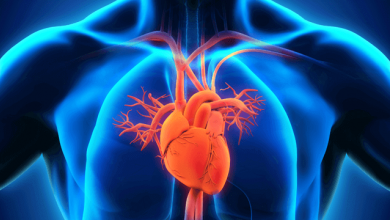ST Segment Elevation Myocardial Infarction: A Life-Threatening Cardiac Emergency
ST segment elevation myocardial infarction (STEMI) is a severe form of heart attack that demands immediate medical attention. When a coronary artery, responsible for supplying blood to the heart, becomes blocked or narrowed due to a blood clot or atherosclerosis, the heart muscle doesn’t receive adequate oxygen and nutrients, leading to its damage or death. It is crucial to understand the causes, symptoms, diagnosis, treatment, and preventive measures associated with STEMI to ensure timely intervention and reduce the risk of complications.
Understanding Myocardial Infarction
Myocardial infarction, commonly known as a heart attack, occurs when the blood flow to a part of the heart is obstructed, resulting in tissue damage. It can be classified into two types: ST segment elevation myocardial infarction (STEMI) and non-ST segment elevation myocardial infarction (NSTEMI). STEMI is considered more severe as it involves complete occlusion of a coronary artery, while NSTEMI involves partial blockage.
Causes and Risk Factors
The primary cause of STEMI is the formation of blood clots in coronary arteries, often triggered by atherosclerosis. Atherosclerosis refers to the accumulation of plaque, consisting of cholesterol, fat, and other substances, on the inner walls of arteries, leading to their narrowing. Several risk factors contribute to the development of atherosclerosis and increase the likelihood of experiencing a STEMI, including hypertension, high cholesterol levels, smoking, diabetes, obesity, and a family history of cardiovascular disease.
Recognizing the Symptoms
Prompt recognition of STEMI symptoms is crucial for seeking immediate medical help. The most common symptom is chest pain or discomfort, often described as a squeezing, pressure-like sensation that may radiate to the arm, jaw, neck, or back. Other symptoms may include shortness of breath, nausea, vomiting, sweating, and fatigue. It is important not to ignore these warning signs and to seek medical assistance without delay.
Diagnosing STEMI
The diagnosis of STEMI involves various tests and examinations. An electrocardiogram (ECG) is the primary tool used to identify ST segment elevation, indicating myocardial damage. Cardiac enzyme tests, such as troponin levels, can confirm the presence of a heart attack. Additional imaging techniques, such as echocardiography, help evaluate the extent of heart muscle damage and determine the best course of treatment.
Immediate Treatment and Management
In STEMI cases, time is of the essence. Immediate reperfusion therapy aims to restore blood flow to the affected coronary artery. Thrombolysis, the administration of clot-dissolving medications, can be initiated promptly in hospitals where percutaneous coronary intervention (PCI) is not readily available. PCI, a minimally invasive procedure, involves the use of a catheter to open the blocked artery and restore blood flow. Medications such as aspirin and nitroglycerin are administered to reduce clot formation and alleviate symptoms. Bed rest and continuous monitoring are essential during the initial recovery period. Furthermore, lifestyle modifications, including a heart-healthy diet and regular exercise, play a crucial role in long-term management.
Complications and Long-Term Outlook
Complications that may arise following a STEMI include ventricular arrhythmias (abnormal heart rhythms), heart failure, and impaired heart function. Cardiac rehabilitation programs, consisting of exercise training, dietary counseling, and emotional support, aid in the recovery process and improve the overall quality of life. Long-term secondary prevention strategies involve managing risk factors, taking prescribed medications, and attending regular follow-up appointments.
Preventive Measures
Prevention is key in reducing the risk of developing STEMI. Adopting a healthy lifestyle, including a balanced diet rich in fruits, vegetables, and whole grains, along with regular exercise, helps maintain cardiovascular health. It is crucial to refrain from smoking and limit alcohol consumption. Managing conditions such as hypertension and diabetes through medication, lifestyle modifications, and routine check-ups significantly reduces the risk of STEMI.
Conclusion
ST segment elevation myocardial infarction (STEMI) is a severe cardiac emergency requiring immediate medical attention. Recognizing the symptoms, seeking timely medical help, and initiating appropriate treatment can significantly improve the prognosis and reduce the risk of complications. By adopting a healthy lifestyle, managing risk factors, and following preventive measures, individuals can safeguard their cardiovascular health and minimize the likelihood of experiencing a STEMI.
FAQs (Frequently Asked Questions)
- What is the difference between STEMI and NSTEMI? STEMI involves complete occlusion of a coronary artery, while NSTEMI involves partial blockage.
- What are the common risk factors for STEMI? Hypertension, high cholesterol levels, smoking, diabetes, obesity, and a family history of cardiovascular disease are common risk factors for STEMI.
- How is STEMI diagnosed? STEMI is diagnosed through an electrocardiogram (ECG) that shows ST segment elevation and cardiac enzyme tests.
- What is the immediate treatment for STEMI? Reperfusion therapy, either through thrombolysis or percutaneous coronary intervention (PCI), is the immediate treatment for STEMI.
- How can STEMI be prevented? STEMI can be prevented by adopting a healthy lifestyle, managing risk factors, and attending regular check-ups to monitor blood pressure and cholesterol levels.








